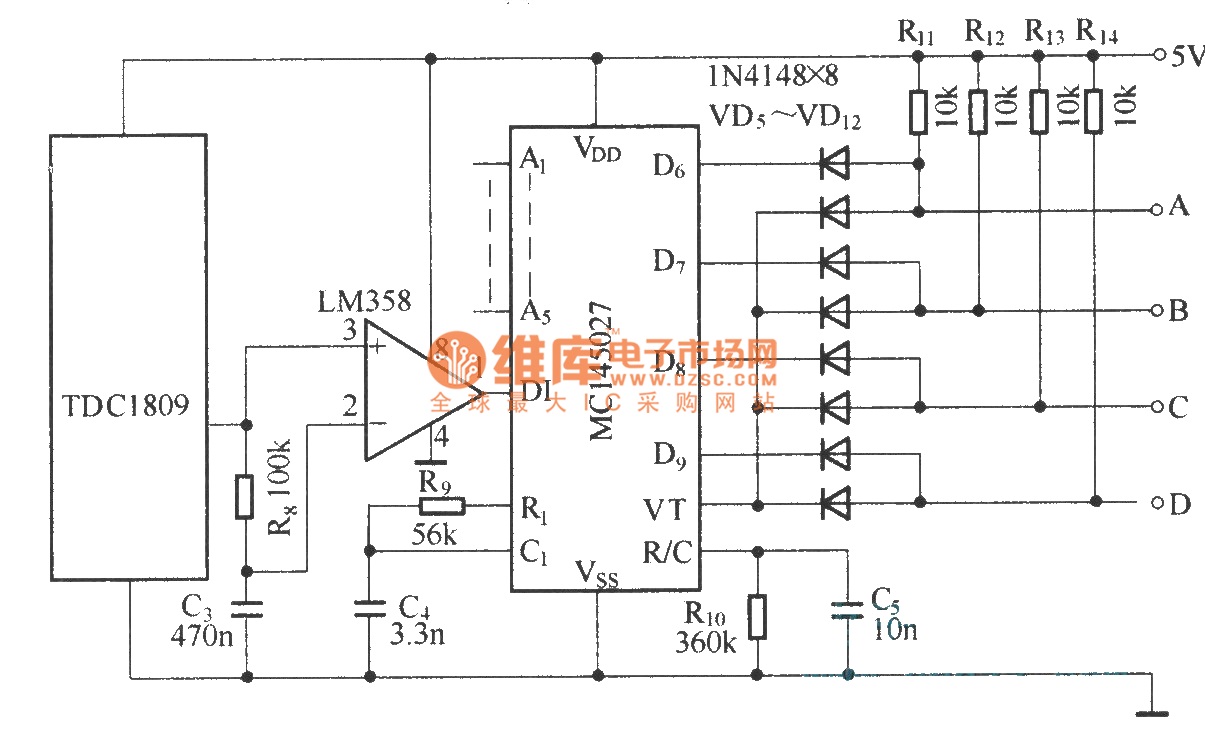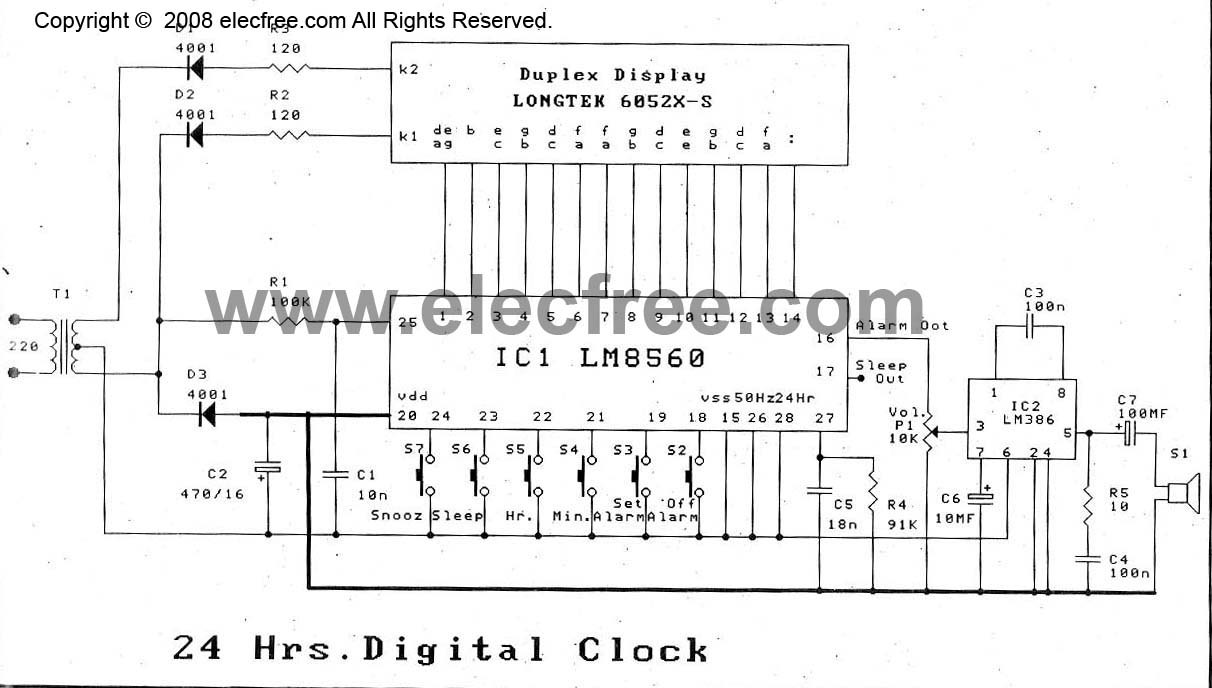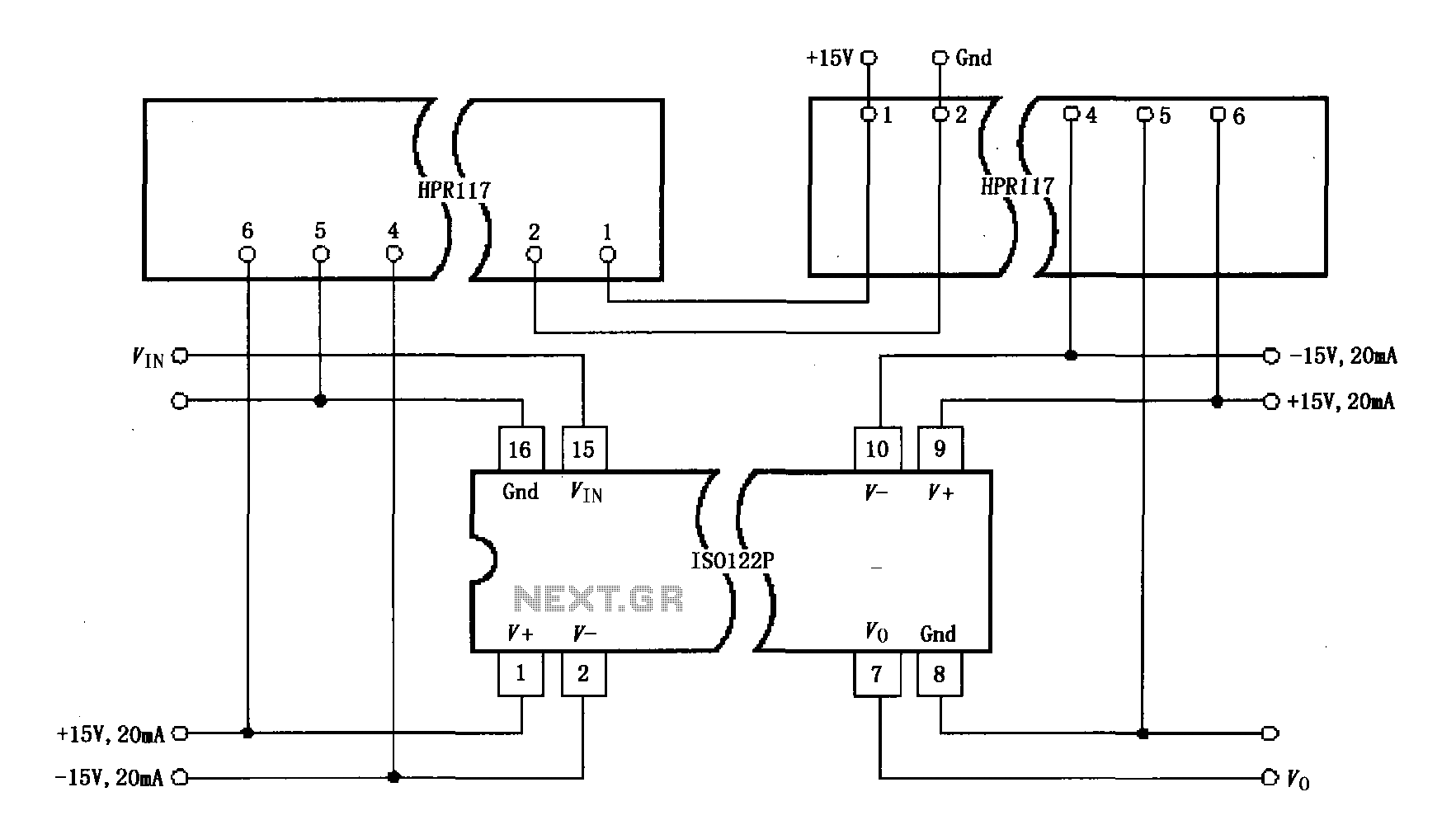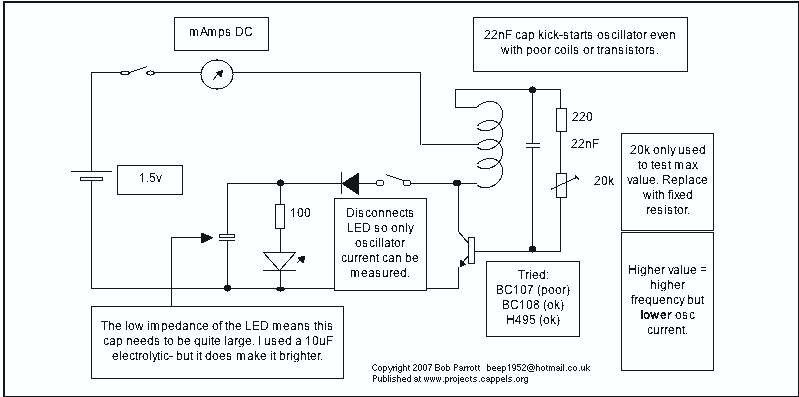
Simple Infrared TX / RX circuit
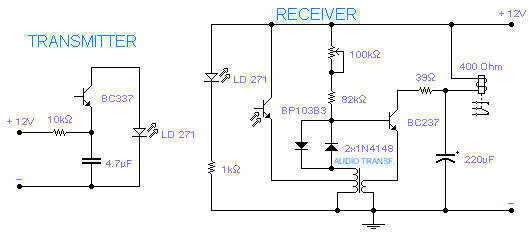
The transmitting section of this infrared tx-rx is unusually simple but it works rather well: the infrared LED pulses at a frequency of 160Hz and its range, with its receiver, is between 2 and 4m depending on the transformer used and the setting of the 100k pot. With other receivers it may reach a range of 15m, without any lens but with a perfect alignment between tx and rx. The receiving section uses an infrared phototransistor and an additional infrared emitter is placed next to it in order to provide a light bias thus improving sensitivity. More: The 100k pot. will also adjust sensitivity by setting the right operating point for the transistor. The supply should be well regulated in order to avoid self-oscillations. The audio transformer is a small output transformer recovered from an old transistor radio.
The infrared transmission and reception system described operates on a straightforward principle, utilizing an infrared LED and a phototransistor to facilitate wireless communication. The transmitter section features an infrared LED that emits pulses at a frequency of 160 Hz, which is crucial for modulating the signal being sent. This modulation allows the receiver to distinguish the infrared signal from ambient light, enhancing communication reliability.
The effective range of the system varies between 2 to 4 meters under typical conditions. However, with optimal alignment and the use of different receivers, this range can extend up to 15 meters. The performance of the system is significantly influenced by the transformer used in conjunction with the infrared LED and the adjustment of a 100k potentiometer. This potentiometer serves a dual purpose: it not only adjusts the sensitivity of the system but also sets the operating point of the phototransistor, which is critical for achieving the desired sensitivity and response.
In the receiving section, the infrared phototransistor is the primary component responsible for detecting the incoming infrared signals. To enhance the sensitivity of the receiver, an additional infrared emitter is positioned adjacent to the phototransistor. This emitter provides a light bias, which improves the overall sensitivity of the detection circuit.
Power supply stability is vital for the proper operation of this infrared tx-rx system. A well-regulated supply prevents fluctuations that could lead to self-oscillations, which may disrupt the transmission and reception of signals. The audio transformer utilized in this circuit is a small output transformer salvaged from an old transistor radio, which is appropriate for this application due to its compact size and sufficient performance characteristics for signal modulation.
Overall, this infrared tx-rx system exemplifies a simple yet effective design for short-range wireless communication, leveraging basic electronic components and principles to achieve reliable performance.The transmitting section of this infrared tx-rx is unusually simple but it works rather well: the infrared LED pulses at a frequency of 160Hz and its range, with its receiver, is between 2 and 4m depending on the transformer used and the setting of the 100k pot. With other receivers it may reach a range of 15m, without any lens but with a perfect alignment between tx and rx.
The receiving section uses an infrared phototransistor and an additional infrared emitter is placed next to it in order to provide a light bias thus improving sensitivity. The 100k pot. will also adjust sensitivity by setting the right operating point for the transistor. The supply should be well regulated in order to avoid self-oscillations. The audio transformer is a small output transformer recovered from an old transistor radio. 🔗 External reference
The infrared transmission and reception system described operates on a straightforward principle, utilizing an infrared LED and a phototransistor to facilitate wireless communication. The transmitter section features an infrared LED that emits pulses at a frequency of 160 Hz, which is crucial for modulating the signal being sent. This modulation allows the receiver to distinguish the infrared signal from ambient light, enhancing communication reliability.
The effective range of the system varies between 2 to 4 meters under typical conditions. However, with optimal alignment and the use of different receivers, this range can extend up to 15 meters. The performance of the system is significantly influenced by the transformer used in conjunction with the infrared LED and the adjustment of a 100k potentiometer. This potentiometer serves a dual purpose: it not only adjusts the sensitivity of the system but also sets the operating point of the phototransistor, which is critical for achieving the desired sensitivity and response.
In the receiving section, the infrared phototransistor is the primary component responsible for detecting the incoming infrared signals. To enhance the sensitivity of the receiver, an additional infrared emitter is positioned adjacent to the phototransistor. This emitter provides a light bias, which improves the overall sensitivity of the detection circuit.
Power supply stability is vital for the proper operation of this infrared tx-rx system. A well-regulated supply prevents fluctuations that could lead to self-oscillations, which may disrupt the transmission and reception of signals. The audio transformer utilized in this circuit is a small output transformer salvaged from an old transistor radio, which is appropriate for this application due to its compact size and sufficient performance characteristics for signal modulation.
Overall, this infrared tx-rx system exemplifies a simple yet effective design for short-range wireless communication, leveraging basic electronic components and principles to achieve reliable performance.The transmitting section of this infrared tx-rx is unusually simple but it works rather well: the infrared LED pulses at a frequency of 160Hz and its range, with its receiver, is between 2 and 4m depending on the transformer used and the setting of the 100k pot. With other receivers it may reach a range of 15m, without any lens but with a perfect alignment between tx and rx.
The receiving section uses an infrared phototransistor and an additional infrared emitter is placed next to it in order to provide a light bias thus improving sensitivity. The 100k pot. will also adjust sensitivity by setting the right operating point for the transistor. The supply should be well regulated in order to avoid self-oscillations. The audio transformer is a small output transformer recovered from an old transistor radio. 🔗 External reference
